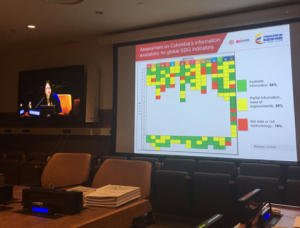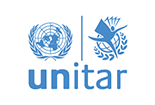During this training event, held at the 2017 United Nations High Level Political Forum, participants learned about the challenges countries face in addressing Sustainable Development Goals (SDGs) and about several unique methods being developed and piloted to enable use of Earth observation data to address these challenges.

In partnership with the National Aeronautics and Space Administration (NASA) and the Group on Earth Observations (GEO), the Global Partnership for Sustainable Development Data (GPSDD) hosted an open training session called “Applying Earth Observation Data for the SDGs” as part of the Learning, Training, and Practice Session at the United Nations High Level Political Forum in July 2017. This training session brought together representatives from the government of Colombia, NASA, the National Oceanic and Atmospheric Administration (NOAA) and academic institutions to discuss the availability of methods and Earth observations products to enhance current statistics and monitoring for population data and natural resources. Representatives outlined the challenges they face and explained some of the unique methods being developed and piloted to use EO data to address these challenges. The specific SDG thematic areas that were addressed included: SDG 1, End poverty in all its forms everywhere; SDG 2, End hunger, achieve food security and improved nutrition and promote sustainable agriculture; and SDG 14, Conserve and sustainably use the oceans, seas and marine resources for sustainable development; and SDG 15, Protect, restore and promote sustainable use of terrestrial ecosystems, sustainably manage forests, combat desertification, and halt and reverse land degradation and halt biodiversity loss.
The concluding discussion focused on a common perception that more needs to be done to drive demand for Earth observations-based techniques from governments and policy makers. Meeting participants noted that concrete examples of reproducible methods packaged for impact need to be developed, and knowledge of their availability for use needs to be diffused through partnerships, international organizations, and UN entities. Further, it was noted that the population data resources presented could be utilized to help create data disaggregation needed for much of the development data elements of the SDGs, to ensure that the overarching principle of the 2030 Agenda, Leave No One Behind, is met.
Click here to learn more about this capacity building event.
Access the presentations from the July 2017 HLPF training session here.
View All Capacity Buildling


























